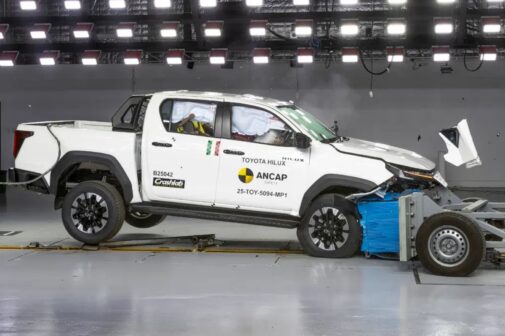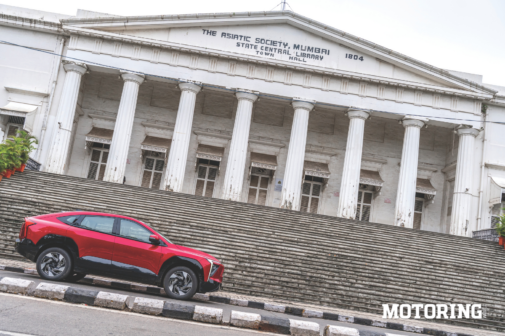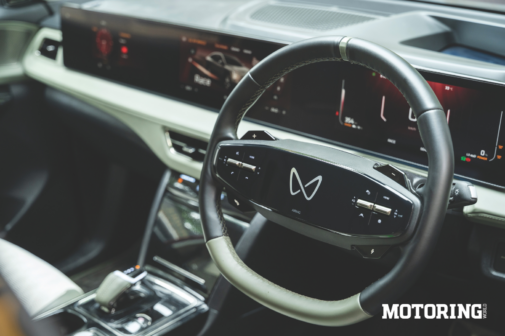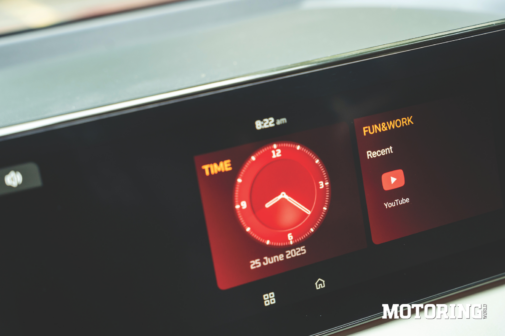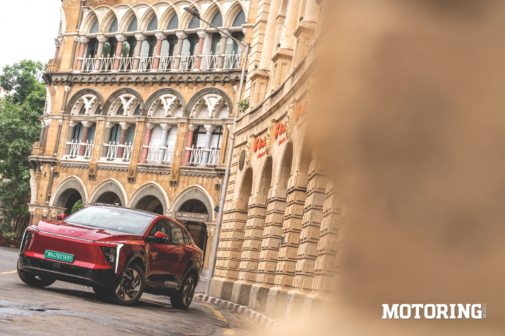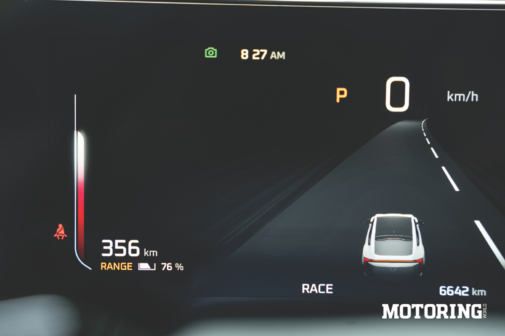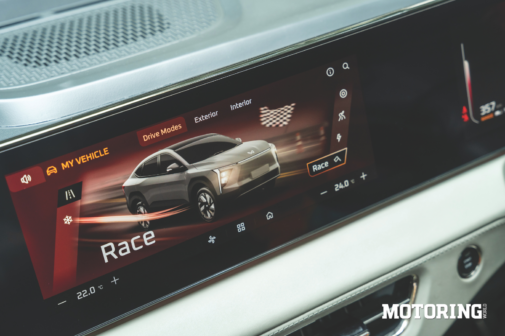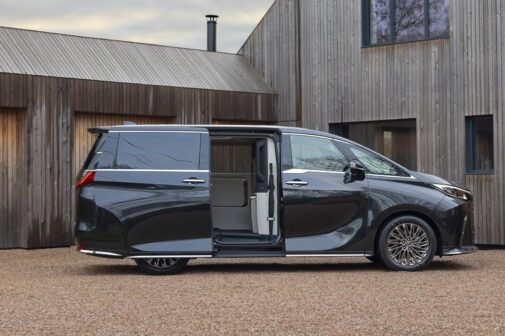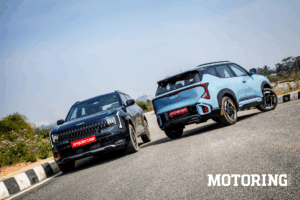The beginning of the horseless carriage is now an everyday reality. Since horses didn’t run on batteries (though I’m sure the equines lasted longer back then… and still do), people in the early 1800s invented four-wheeled contraptions that did. EVs existed long before most present-day countries did, and not just as one-off just-invented experiments, either — electric carriages were used as taxis in the UK and the US before the calendar flipped to ‘1900’. Wildly different times, obviously, and while I’m not the type to get caught up in accidents of geography or cling to transient notions of nationality, I couldn’t help but wonder — how the hell did Mahindra manage to make the XEV 9e into the world-class vehicle it is? Probably because it’s electric. Also, because it is made up of parts from all over the world, but we’ll get to that later.
Ask any one of the 1.46 billion Indians what a Mahindra is, and the odds are that they’ll tell you it’s a rugged four-wheeled chariot with a noisy diesel providing a reassuring soundtrack. And to be honest, that’s exactly what I have a soft spot for myself. In the XEV, instead, the most testosterone-loaded thing was the rather manly voice booming through the speakers, authoritatively informing me that I was driving a very powerful vehicle. At least I don’t need this kind of patronising welcome, and this is also why, possibly, I believe that EVs are mostly bought by champions of malapropisms who confidently spout things like ‘basis that’, ‘ASAP as possible’ and ‘revert back’. It only reflects minds as dim as the view out of the XEV’s rear windshield.
Anyway, as with anything nowadays, I didn’t know if that voice on-steroids belonged to a real person (I’d like to compare baritones) or if it was synthesised on a computer — which pretty much sums up how I’ve always felt about EVs. I grew up in a mechanically analogue world that’s turning digitally electric faster than any human mind can adjust to. We should all appreciate the value of real thought and work, not just mind-numbing efficiency, right? And yet, the XEV continued to confound my long-held beliefs. First of all, I wasn’t expecting it to be as big as it stood before me. I liked the overall shape of it, especially the swooping fastback-style rear, but it still looked like it was designed by an algorithm, not an artist. But then again, that’s just most EVs these days.
Anyway, whenever I’m handed a fully-charged EV, I have a tendency to put it in the highest available power mode and see how it goes. That’s exactly what I did with the XEV, in Race mode, and it certainly didn’t disappoint. The XEV proved that EVs are indeed masters of acceleration, thanks to the way they make instant torque even if you so much as think of the throttle pedal, and no need for a transmission. And in the time you took to read the last sentence, the XEV whooshed past a speed-limit sign at twice the number it nervously suggested. Initial brake feel reminded me of my PS5 controller, but the XEV slowed down in a hurry whenever I wanted it to, even more so when one-pedal driving was engaged with the inconveniently placed button on the steering wheel. The XEV has impressive performance, no doubt about that. But it’s the refined way in which all of it is delivered that’s the highlight. And that did have an unexpected effect on me.
Yes, of course, I did want to feel the full force of electric acceleration as many times as I could. However, more and more, I found the XEV calming me down, inviting me to waft along on a silent wave of effortless, linear torque. The suspension setup played its part rather well, too; strong yet supple, it afforded me the luxury of ignoring whatever came under the XEV’s wheels. With no real need to slow down at any point, and with the power always at hand no matter the driving mode, progress was always steady and unruffled. And honestly, I don’t know of a single person who doesn’t like being transported that way, driver or passenger. And, for the first time ever in an EV for me, the spectre of range anxiety stayed firmly away — I could not believe it!
The XEV went over 450 km on a single charge, and could’ve gone even longer if I’d been more sensible with it. It was easy to find the right level of regen with the steering-mounted switches, and simply keep going without a worry. In real-world terms, depending on usage, I’d have to charge the XEV once in around a week to ten days. This was a game-changer for me, really, so much so that I started imagining driving it to Goa on a single charge, just for the heck of it. Of course, it’ll need planning and perhaps one top-up stop along the way, but it’s reassuring to know that the XEV can go a long distance before running out of juice. So that, obviously, left my mental reserves to deal with the infernal driving aids.
Seriously, and I’m addressing this to all the manufacturers that sell cars in India — just stop with those ADAS systems. They’re annoying at best and can cause dangerous situations at worst. Picture this: I was driving along one morning, as wide awake as possible and paying attention to the road, and the car threw a drowsy-driver alert at me. Later, after having indicated a lane change, the steering wheel resisted going where I was asking it to, vibrating in needless protest. And likewise, the forward collision avoidance system had a mind of its own, braking when there was absolutely no need to. Not to mention that the blind-spot warnings in both the external rear-view mirrors were perpetually on. Here’s the point — all of this can only work if all cars on the road are fully automated. Until then, I’m not sure if I’ll be watching the road or watching the electronic genie in the car watching the road for me.
It’s not that I don’t appreciate the technology, I actually do. And that’s another aspect of what makes the XEV special; it’s made via collaborations with companies from the USA, France, Germany, China, Israel and others, which shows the global scope and intent of Mahindra’s EV project. The world could do with more unity these days, and if it takes EVs to bring that about, so be it. However, finally, I must come to the little things that I didn’t like so much. Whether it was the ‘V8 tribute’ artificial soundtrack, which seemed like an electronic Kinetic Honda CVT or the surfeit of complicatedly named ‘features’, it all felt a bit too gimmicky.
I don’t think any car needs to come installed with the YouTube app. And there was more of that piano-black finish on the XEV than on the Stolëmowi Klawé, the world’s largest piano. Also, I don’t know if EVs will ever make up the full fleet in a Fast & Furious movie, or if Jason Statham will ever throw someone in the back of one, but I must say that EVs have indeed come a very long way in a very short time. And I don’t know when or even if the prickly topic of where the nickel, lithium and cobalt come from, and the environmental (global and local) and social (only local) consequences of mining them, will ever be addressed. However, after exiting the XEV’s silent interior, even the early-morning surroundings of South Mumbai felt about as subtle as a marching band in a library. And my obstinate refusal towards EVs turned into reluctant respect. I never imagined an Indian EV could do that!









